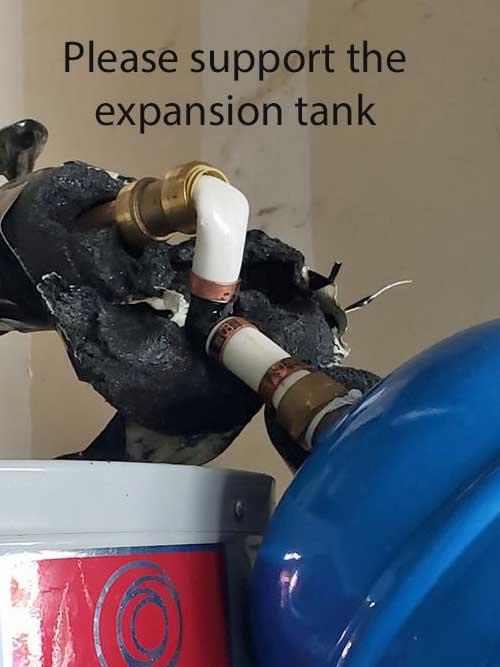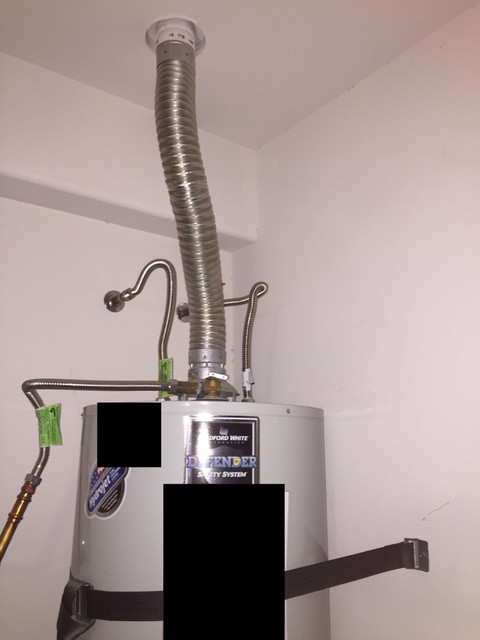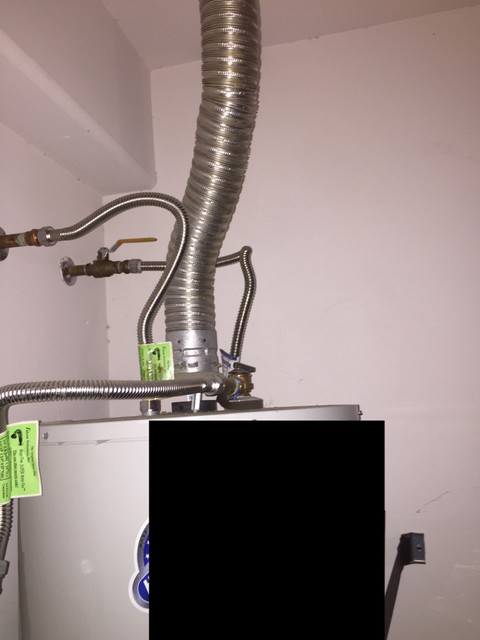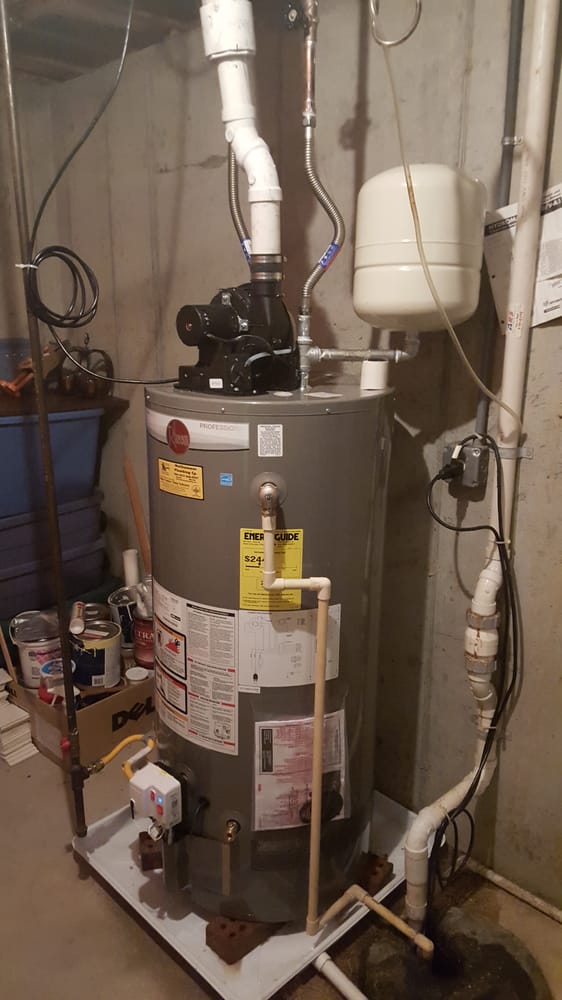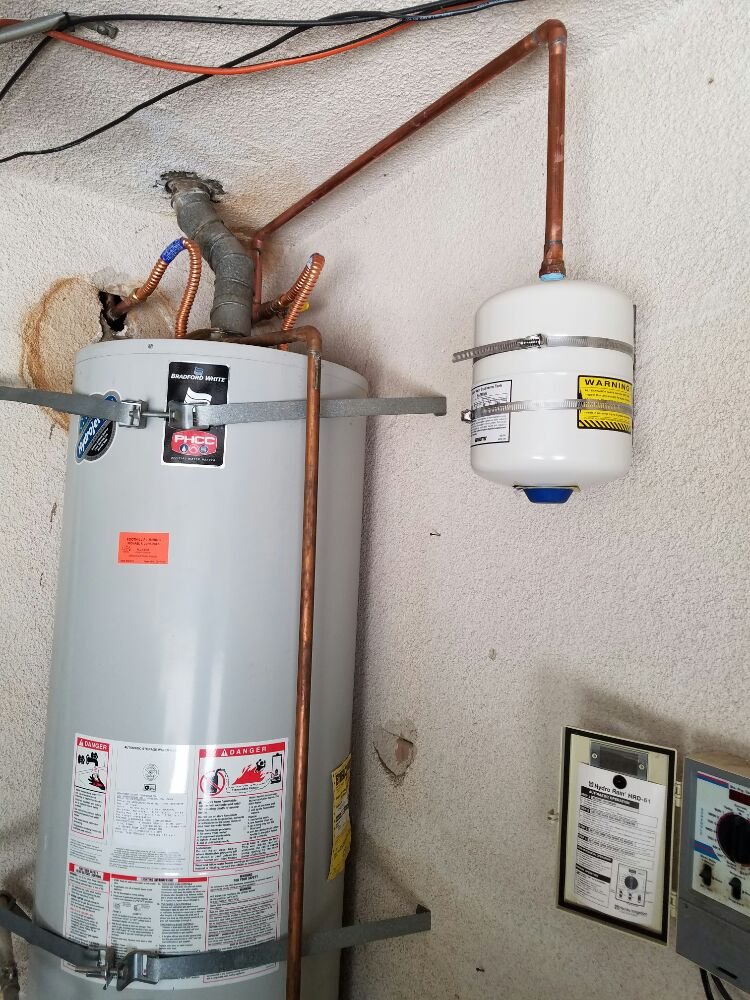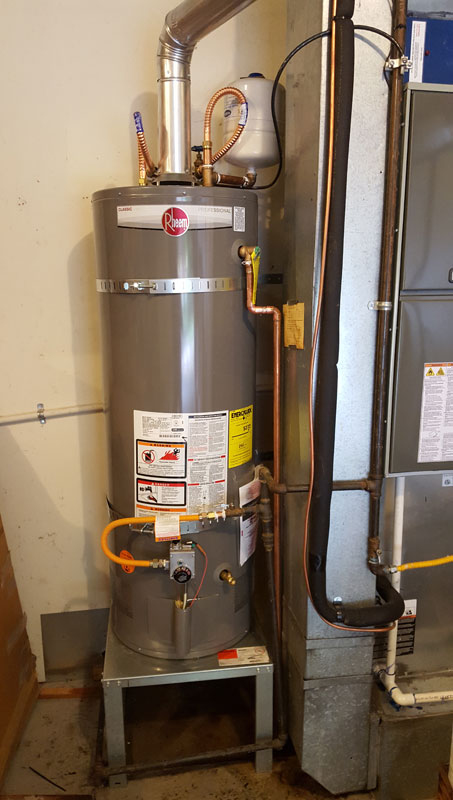Eljay
New Member
We moved into a home with a PRV but no water heater expansion tank. Leaks around the house have made installing an expansion tank a priority. Better late than never.
I see many folks installing tanks horizontally with/without straps or vertically with the connection down. I'd just like to play it as safe as possible and install it vertically with connection up. Making it easier to switch out tanks without taking a bath is an added bonus.
Question 1: What do you all think about the installation options below?
Option A (Blue line): Copper pipe with a straight shot from the cold water line completely across the top of the water heater and then downward to the expansion tank. I don't have much experience running copper pipe for water. But I assume that this would be too long of a run without any added support. I would use a couple of shelf brackets (something like this at home depot) installed at each two available wall studs.
The pipe would be secured to the shelf brackets using copper tube straps.
Option B (Green line): Copper pipe runs along the wall. A 2"x6" would be installed horizontally spanning two studs along the wall. Copper tube straps (home depot) would secure the pipe to the 2"x6" at two points.
Option C (not pictured): Run corrugated copper or steel connectors.

In all scenarios, I'd secure the expansion tank to the wall using one of these brackets:
Storm King Hydroclaw (supplyhouse)
or
Holdrite Quickstrap (supplyhouse)
I assume Option B (green line) is preferred since it will provide the most support when the bladder fails?
Question 2: A MIP adapter is currently installed on the cold water supply shutoff valve allowing connection to the water heater with corrugated steel flexible hoses. Ideally, I know it should be removed. But I don't have much experience unsoldering copper fittings, especially in such an awkward space so close to the wall. Could I just screw on a FIP adapter and go from there?
I see many folks installing tanks horizontally with/without straps or vertically with the connection down. I'd just like to play it as safe as possible and install it vertically with connection up. Making it easier to switch out tanks without taking a bath is an added bonus.
Question 1: What do you all think about the installation options below?
Option A (Blue line): Copper pipe with a straight shot from the cold water line completely across the top of the water heater and then downward to the expansion tank. I don't have much experience running copper pipe for water. But I assume that this would be too long of a run without any added support. I would use a couple of shelf brackets (something like this at home depot) installed at each two available wall studs.
The pipe would be secured to the shelf brackets using copper tube straps.
Option B (Green line): Copper pipe runs along the wall. A 2"x6" would be installed horizontally spanning two studs along the wall. Copper tube straps (home depot) would secure the pipe to the 2"x6" at two points.
Option C (not pictured): Run corrugated copper or steel connectors.

In all scenarios, I'd secure the expansion tank to the wall using one of these brackets:
Storm King Hydroclaw (supplyhouse)
or
Holdrite Quickstrap (supplyhouse)
I assume Option B (green line) is preferred since it will provide the most support when the bladder fails?
Question 2: A MIP adapter is currently installed on the cold water supply shutoff valve allowing connection to the water heater with corrugated steel flexible hoses. Ideally, I know it should be removed. But I don't have much experience unsoldering copper fittings, especially in such an awkward space so close to the wall. Could I just screw on a FIP adapter and go from there?

